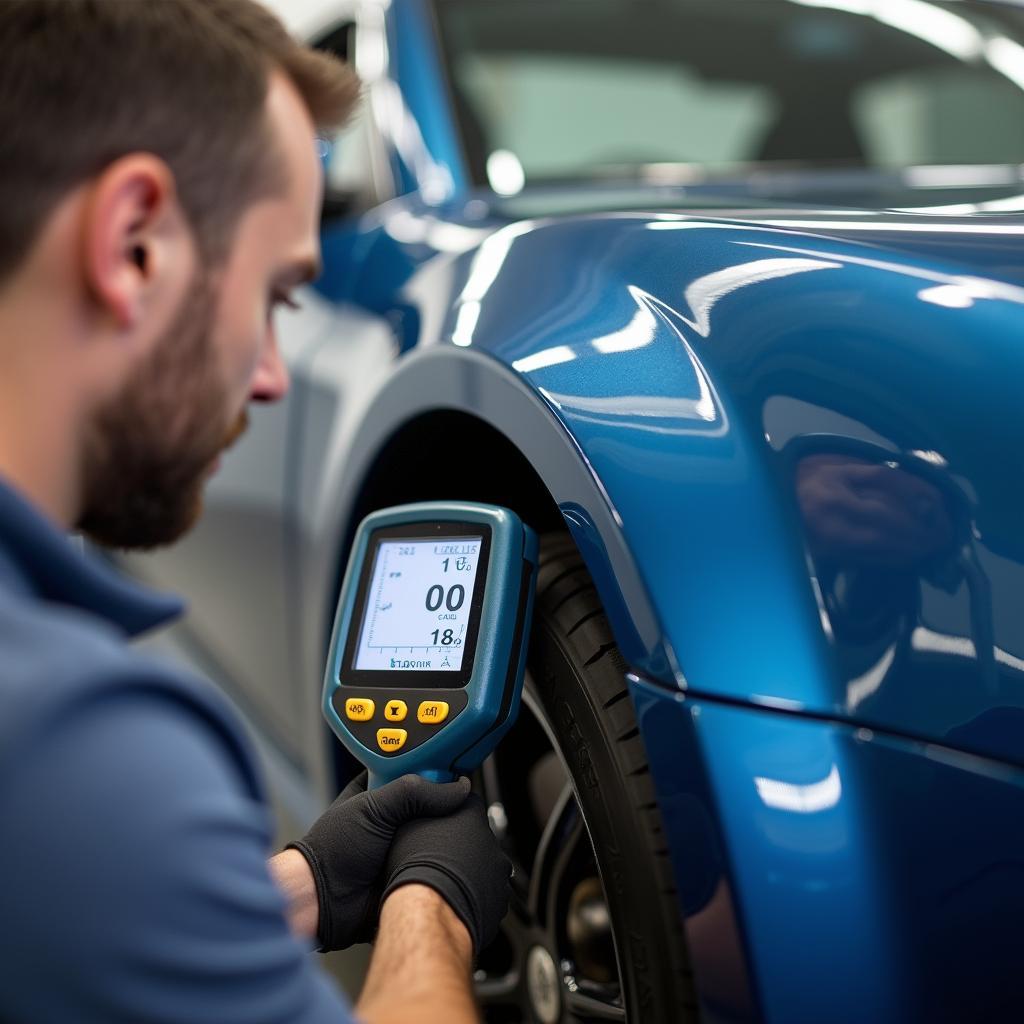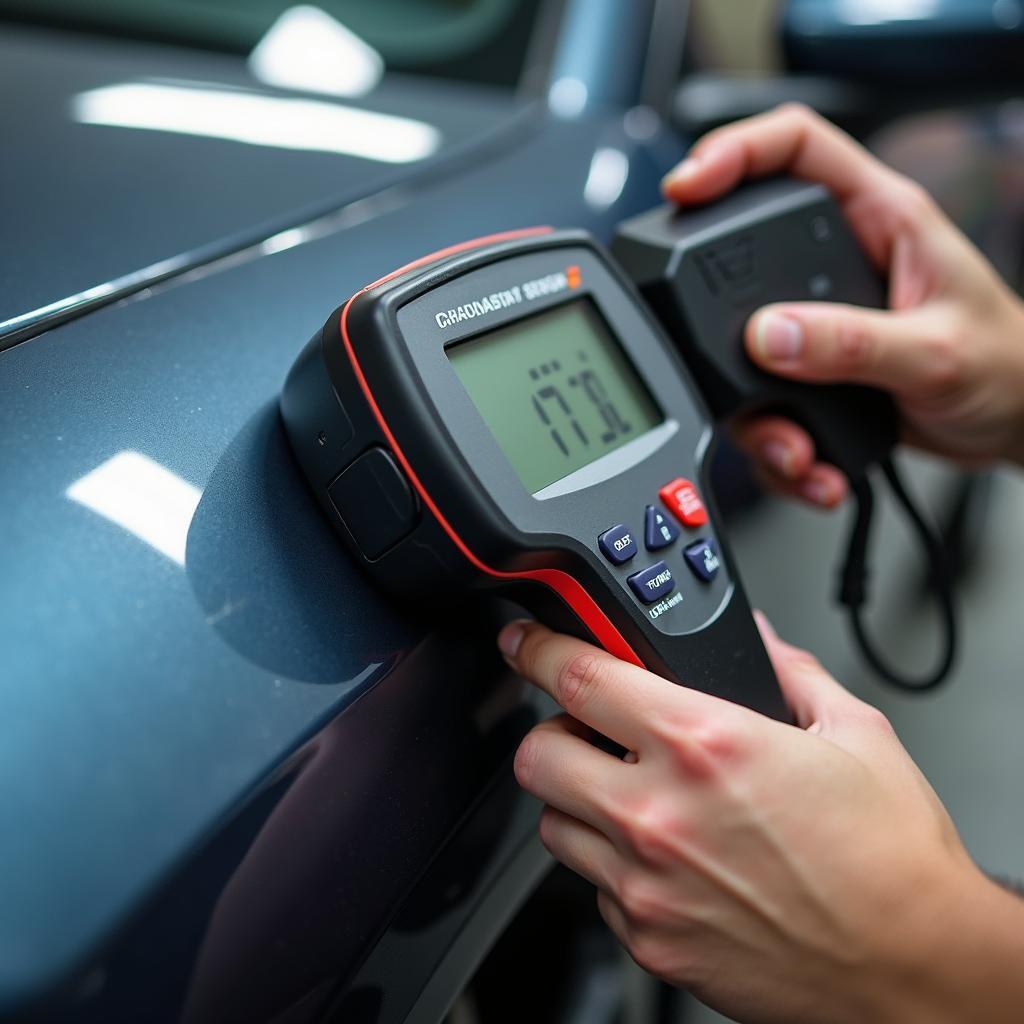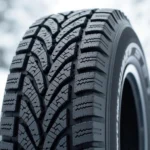While car paint thickness might seem minor at first glance, it plays a crucial role in a vehicle’s appearance, value, and longevity. As an experienced auto technician, I know that measuring paint thickness is essential for uncovering hidden damage, substandard repairs, or even fraud.
But what exactly does this term mean, and why is it so important?
What is Paint Thickness and Why Is It Relevant?
Paint thickness refers to how thick the layer of paint is on your car’s body. This thickness is measured in micrometers (µm). A new car typically has uniform paint thickness, which varies depending on the manufacturer and model.
“Paint thickness is like the skin of a car – it protects against external influences and significantly contributes to the overall impression,” says Dr. Ing. Markus Schmidt, Head of Vehicle Appraisal Department at TÜV Süd.
 Auto technician measuring car paint thickness
Auto technician measuring car paint thickness
The Importance of Paint Thickness Measurement in Detail
Why is measuring paint thickness so important?
- Detecting Accident Damage: After an accident or paint damage, the affected area is usually repainted. A significantly different paint thickness can be an indicator of a repair performed, even if it appears well done.
- Identifying Body Filler: To smooth out dents or imperfections, body filler is often used. This is easily detected by measuring paint thickness, as it increases the layer’s thickness.
- Assessing Paint Quality: A paint layer that is too thin can indicate poor quality paintwork or cost-saving measures and can lead to faster rust and other damage.
- Vehicle Appraisals: The originality of the paint plays an important role in vehicle valuation. Paint thickness measurement provides valuable information about the vehicle’s condition and thus influences the selling price.
How Professionals Do It: Performing Paint Thickness Measurement
Measuring paint thickness is done using a special measuring device, known as a paint thickness gauge. This device is simply placed on the car’s body and displays the exact value within a few seconds.
Modern paint thickness gauges are capable of taking precise measurements on both steel and aluminum car bodies. In addition, some devices offer extra features like storing measurements or connecting to a smartphone for documentation and analysis.
 Digital automotive paint thickness gauge
Digital automotive paint thickness gauge
What to Look for When Buying a Paint Thickness Gauge
Not every paint thickness gauge is the same. Here are some important criteria to consider when buying:
- Measurement Accuracy: Look for high measurement accuracy to get reliable results.
- Measurement Range: The measurement range should be sufficiently large to measure both thin and thick paint layers.
- Ease of Use: The device should be easy to operate and have a clear display.
- Additional Features: Useful extra features include automatic shut-off, measurement storage, or Bluetooth connectivity.
Paint Thickness Testing: A Benefit for Every Car Owner
Paint thickness measurement offers numerous advantages – not just for workshops and appraisers, but for every car owner too. It provides valuable insights into the vehicle’s condition, helps with purchasing decisions, and can protect against unpleasant surprises.
- Want to learn more about vehicle diagnostics? Read our article on OBD diagnostic tools.
- Interested in car detailing? Find tips and tricks for professional car care here.
Contact us today, our automotive experts are here to help!

